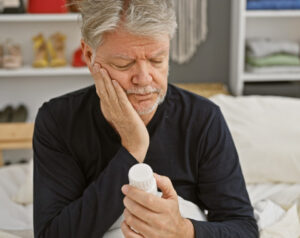
August 31 is International Overdose Awareness Day. It is a day to remember, without stigma, those who have lost their lives due to overdose and to support their loved ones. The annual campaign is also an opportunity to educate communities about how to reduce the risks of accidental overdose and how to access emergency life-saving treatment.We are in an opioid epidemic. According to Health Canada 2023 statistics, opioids were associated with an average of 22 deaths per day, 17 hospitalizations per day, and 78 visits to emergency departments per day for opioid poisoning. In Canada, emergency services are called an average of 115 times per day for suspected opioid-related overdoses. Unfortunately, there is often a stigma associated with overdose that prevents people from taking precautions. Opioid overdoses do not just affect people taking illegal drugs like heroin. The number of people suffering from opioid dependence is increasing and has widespread reaches across socioeconomic classes, educational backgrounds, cultures and ages. Addiction or substance use disorder, can start from taking prescribed pain-relieving medications after a surgery or accident or after using medications that were prescribed for a friend. Opioid medications have a higher risk than other drugs for causing dependence. Accidental opioid overdose can occur when incorrect or duplicate doses are taken, if opioids are taking differently than prescribed, or if opioids are taken in combination with certain medications that intensify their effects. It is important for everyone to speak to their healthcare provider to learn which medications they have at home that carry a risk of dependence or accidental overdose. Never share your prescription medications with others.Opioids are a class of drugs derived from the opium poppy plant. Everyday we hear of overdoses associated with illegal drugs like heroin or drugs contaminated with fentanyl. But it is important to recognize that opioids also include non-prescription low dose codeine products and dextromethorphan found in many cough syrups and prescription medications like stronger doses of codeine, tramadol, morphine, hydromorphone, oxycodone, fentanyl, and methadone. Combining these medications increases the risk of side effects and overdose. Some other medications can increase the risk of opioid toxicity including anti-seizure medications, antidepressants, some antibiotics or antiretroviral drugs, muscle relaxants, sedatives, sleeping pills.Common side effects of taking opioid drugs include drowsiness, dizziness, nausea, and constipation. If taken inappropriately, opioids have potential to cause a pleasurable feeling or “a high” that may encourage some people to want to continue to take the agent. But, the greatest risk of taking opioids is that they can cause a dangerous decrease in breathing rate and heart rate which can lead to death. For this reason, they should be taken at the lowest effective dose and for the shortest length of time possible.It is common to receive an opioid pain reliever after a surgery, injury, or dental procedure because they can be an effective way to manage moderate to severe pain in a short-term setting. If long-term use is necessary, the patient should be carefully monitored and informed of the risks and benefits of continued use. Patients should discuss all prescription and non-prescription medications they are taking with their prescriber so they can assess their total risk for side effects, dependence, using the medication for longer than intended or in ways other than prescribed, or overdose.When taking medication for pain, patients and their prescriber should set realistic expectations about pain control and set a goal level for pain reduction. The treatment plan will often include non-drug ways to relieve pain including applying ice to the area, physiotherapy, registered massage therapy and relaxation techniques. The plan should also include how long to be on the medication and how to reduce risk for dependence and overdose. One way to reduce this risk is to fill smaller amounts of the medication and check in regularly with a health care provider when more is needed. Patients and their caregivers should speak to their pharmacist about which medications contain opioids and other medications that can increase their risk of adverse effects.If you or a loved one are taking opioid drugs (from a pharmacy or obtained elsewhere), consider keeping a naloxone kit with you at all times, and make sure all household members know how to use it. Naloxone is a life-saving medication that can be used in an emergency to temporarily reverse the effects of an opioid overdose while 911 medical help is called. Naloxone is available as an easy-to-use injection or a nasal spray and can be used along with CPR until help arrives. Naloxone kits can be picked up for free at many pharmacies, community organizations, and provincial correctional facilities. Don’t be afraid to ask for a kit at your pharmacy. A pharmacist will provide basic training for how and when to use the naloxone. Speak to your London Drugs Pharmacist for more information.Related






